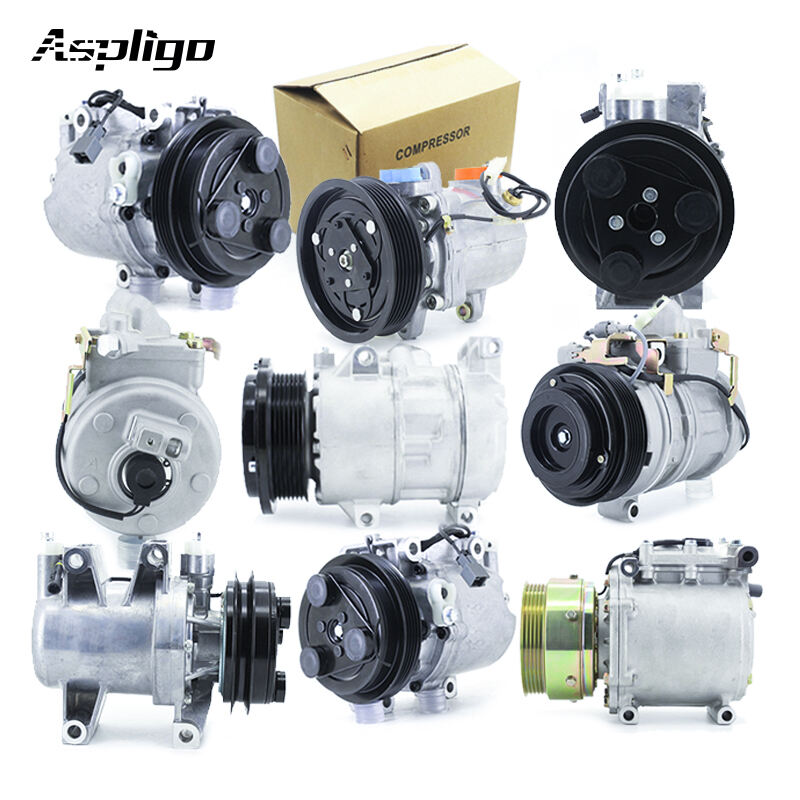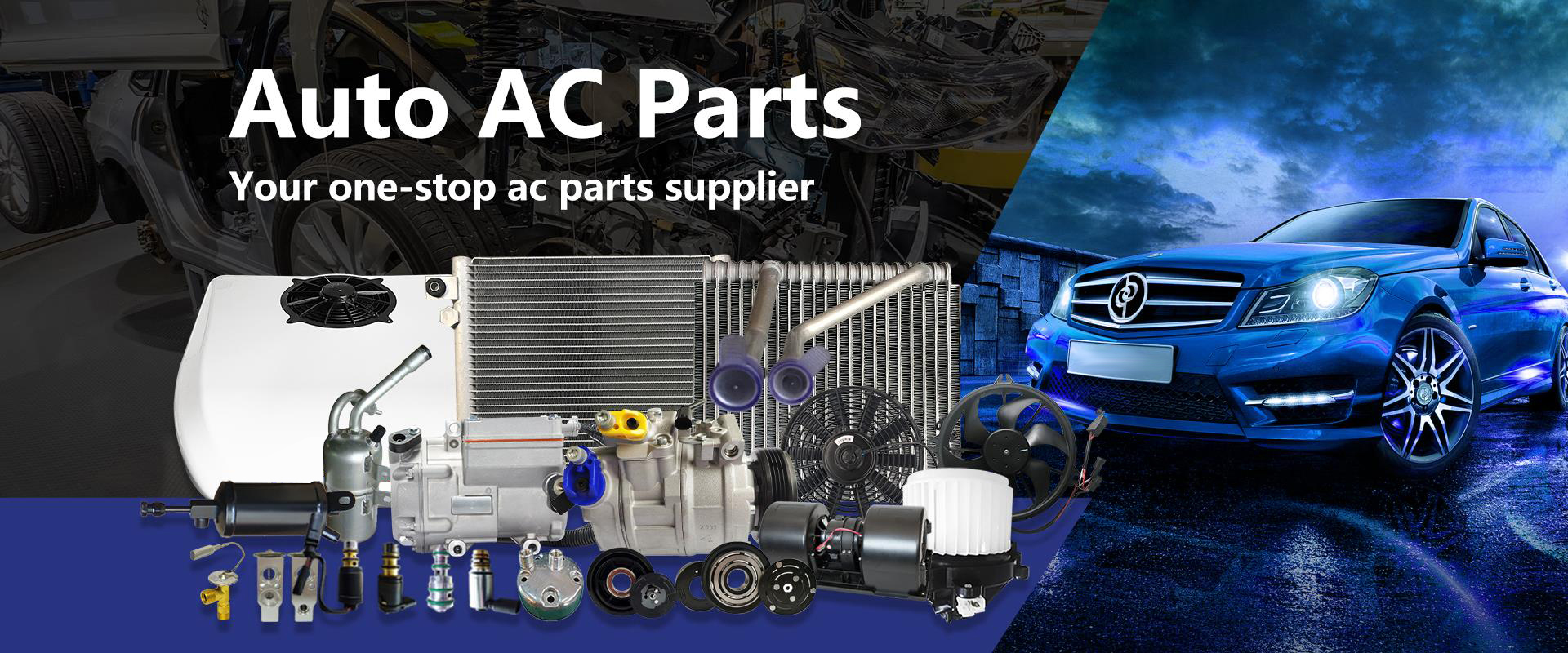Explore the World of Auto AC Parts: A Comprehensive Guide
Essential Components of Auto AC Systems
Understanding the Compressor's Critical Role
At the core of any car's air conditioning setup sits the compressor, responsible for moving refrigerant around and creating necessary pressure levels. Basically acting like a pump, this component gets its power from a belt connected to the engine via pulleys. The job here is pretty important stuff really because it raises both pressure and temperature of the refrigerant gas before it heads off into other parts of the system. When looking at different kinds of compressors, we generally see two categories: those with fixed displacement and ones with variable displacement. Fixed models keep pumping out the same amount no matter what the cooling requirements might be. Variable displacement versions, however, change their output based on actual cooling demands, which explains why newer cars tend to favor these for better efficiency. Don't forget regular maintenance checks either. Mechanics will tell anyone who'll listen that problems with compressors account for about 40 percent of all AC breakdowns, so keeping an eye on this part makes good sense over time.
Condensers: Heat Exchange Champions
The condenser does an important job of getting rid of heat when refrigerant changes from gas back to liquid form, which is really critical for keeping cars cool. These components sit right behind the front grille where they have those metal coils and thin fins that help transfer all that unwanted heat away. When looking at condenser options, two main types stand out: tube and fin models versus parallel flow ones. The tube and fin kind tends to be cheaper upfront but doesn't work quite as well in the long run. Parallel flow condensers though? They just plain perform better with their improved cooling capabilities and higher efficiency rates. Some research from the International Journal of Automotive Technology even suggests switching over to these newer designs could boost AC system efficiency anywhere between 15 to 20 percent depending on conditions.
Evaporators and Expansion Valves Explained
The evaporator does most of the heavy lifting when it comes to cooling down the air that gets into the car's interior space. When refrigerant moves through this component, the blower motor kicks in and forces air over those chilly tubes inside, which means cooler air actually makes it into where people sit. Now, expansion valves play their part too. These little devices hang out somewhere between the dryer and the firewall, regulating how much refrigerant passes through. They let the refrigerant change from something dense and pressurized to a lighter mist form, which helps everything work better. Some systems use thermostatic expansion valves that give pretty good control, but others go for electronic versions that can adjust themselves automatically based on what's needed at any given moment. Getting these parts right really matters for keeping passengers comfortable during long drives, especially when temperatures outside get either way too hot or freezing cold.
The Refrigeration Cycle Simplified
A car's air conditioning works through what's called the refrigeration cycle, which basically goes through four main steps. First off, the refrigerant gas gets compressed inside the compressor, turning it into something really hot and pressurized. After that, this heated gas travels over to the condenser part of the system where it loses its heat and turns into a liquid form but still under pressure. Then comes the expansion valve or sometimes called an orifice tube, where the refrigerant suddenly drops in pressure and temperature, becoming a chilly liquid mixture. Lastly, when this cold stuff reaches the evaporator coil inside the dashboard area, it pulls heat out of the cabin air as it changes back into vapor form. What happens next? The whole thing just keeps going around again and again until we get nice cool air blowing through those vents, keeping everyone inside reasonably comfortable during those sweltering summer drives.
When talking about cars, refrigerant moves back and forth between the high pressure side and low pressure side inside the cooling system. Think of the compressor as sort of the engine's heart, pushing around and keeping moving all that refrigerant through the entire air conditioning setup. Each part matters a lot during this whole process, and when everything works together properly, that makes all the difference for good cooling performance. Taking care of these components regularly helps keep things running right, so drivers stay comfortable no matter how sweltering outside temperatures get during summer months.
Balancing Humidity and Temperature
The AC system in cars does more than just adjust the temperature; it actually handles humidity too, which plays a big role in how comfortable people feel inside. When there's lots of moisture in the air, heat tends to stick around longer and feels worse than it really is. That's why modern AC units work hard to pull water vapor out of the atmosphere as they lower the temperature. What this means for drivers and passengers is that the air circulating through the car isn't just colder on paper, but genuinely feels better when breathing it in after sitting in traffic during summer months.
Car air conditioning systems aren't just about cooling down the interior. They work hard to manage both temperature and moisture levels inside vehicles. When AC pulls excess humidity out of the air, it actually changes how hot we feel. Research indicates that cutting humidity can trick our senses into thinking an 85 degree Fahrenheit car feels more like around 78 degrees instead. The way these systems handle both warmth and dampness makes driving much more pleasant, especially when temperatures soar during those sweltering summer days on the road.
Spotting Common AC Performance Issues
Weak Airflow and Warm Air Warning Signs
Strong airflow through an automotive air conditioning system makes all the difference when it comes to keeping things cool inside the vehicle. Weak airflow happens quite frequently actually, usually because of dirty filters, clogged vents, or sometimes even problems with the compressor itself. Most of the time though, this stems from not doing routine maintenance on the system at all, letting dust and grime build up over months or years until it starts blocking proper air movement. When facing these kinds of issues, people need to check those filters first either cleaning them out or swapping them completely, then look around to see if any vents might be stuck closed somewhere. Also worth noting are strange sounds coming from the compressor area since that could signal bigger trouble ahead. Getting into a habit of regular maintenance work goes a long way toward avoiding these headaches altogether while making sure everyone stays comfortable during drives no matter how hot it gets outside.
Unusual Noises and Leak Detection
Strange sounds coming from the car's air conditioning unit often signal trouble ahead. Hissing noises usually point to refrigerant leaks, while metallic clinks or clicks might indicate loose parts somewhere in the system. Refrigerant leaks are no small matter either since they really mess with how well the AC works overall. Finding these leaks typically means looking around carefully for oil stains or residue, plus sometimes adding special dye to track down where the refrigerant escapes. If someone suspects something's going on with their AC, getting it checked out right away makes sense before things get worse. A good mechanic will run proper tests, check pressure levels, and replace components when needed to keep the cooling system running properly for years to come.
Maintaining Peak AC Efficiency
Filter Maintenance Best Practices
Keeping those filters clean makes all the difference when it comes to how well your AC works and keeping the air inside your car fresh. When filters get dirty or clogged up, airflow gets restricted and suddenly your AC has to strain just to do its job properly. Want to maintain good cooling? Check out that cabin air filter regularly and swap it out when needed. Most folks find theirs either tucked behind the glove box or somewhere under the hood. Take out the old one, give the area a quick sweep for any junk that might have collected there, then slide in the new filter making sure it sits snugly in position. Clean filters aren't just about comfort either they actually help the whole vehicle run better while stopping dust, pollen, and other irritants from floating around inside where passengers breathe.
Optimizing Performance in Extreme Heat
Keeping an air conditioning system efficient during those brutal summer days needs some smart thinking plus routine care. When parking somewhere, try to find shade whenever possible or invest in those reflective window covers they sell at auto stores. These simple steps help reduce how much heat gets trapped inside the car, which means less stress on the AC unit itself. Regular maintenance matters too because parts just don't last forever when pushed hard through intense heat waves. Mechanics can spot problems early during inspections and fix them before they become major headaches later on. Some studies show that without proper care, AC systems might lose around 25 percent of their effectiveness when temperatures really spike. That's why getting everything checked out ahead of time makes sense for anyone wanting reliable cooling throughout the sweltering months.
Premium Auto AC Parts for Reliable Cooling
Auto AC Parts Ac Compressor: Core Cooling Technology
Compressor tech improvements are shaking things up in the auto world, making car AC systems work better and last longer than ever before. Take the Auto AC Parts Ac Compressor as an example it's built with smarter engineering that cuts down on annoying noises and stands up to wear and tear much better. When someone spends money on a good quality compressor, they get consistent cooling no matter what kind of weather conditions roll around this matters a lot to drivers who want their ride to stay comfortable all year round. Mechanics and repair shops tend to point out these top tier compressors when talking about replacement options because they simply outperform cheaper alternatives over time. The bottom line is straightforward better parts mean fewer breakdowns and happier customers in the long run.
Durability Meets Performance in Modern Designs
When it comes to air conditioning components today, manufacturers strike a good balance between how long parts last and how well they work by using stuff like corrosion resistant alloys. These special materials help things last longer while still performing great even when temperatures get really hot or cold. Most people who know what they're doing look at warranty periods and check out who made the part before buying anything for their vehicle. After all, nobody wants to spend money on something that will break down quickly. Real world tests show that higher quality parts tend to stick around much longer than cheaper alternatives, especially in places where cars face tough conditions day after day. Better built components simply work better at keeping engines cool, which makes sense since poor cooling can lead to major engine problems down the road.



